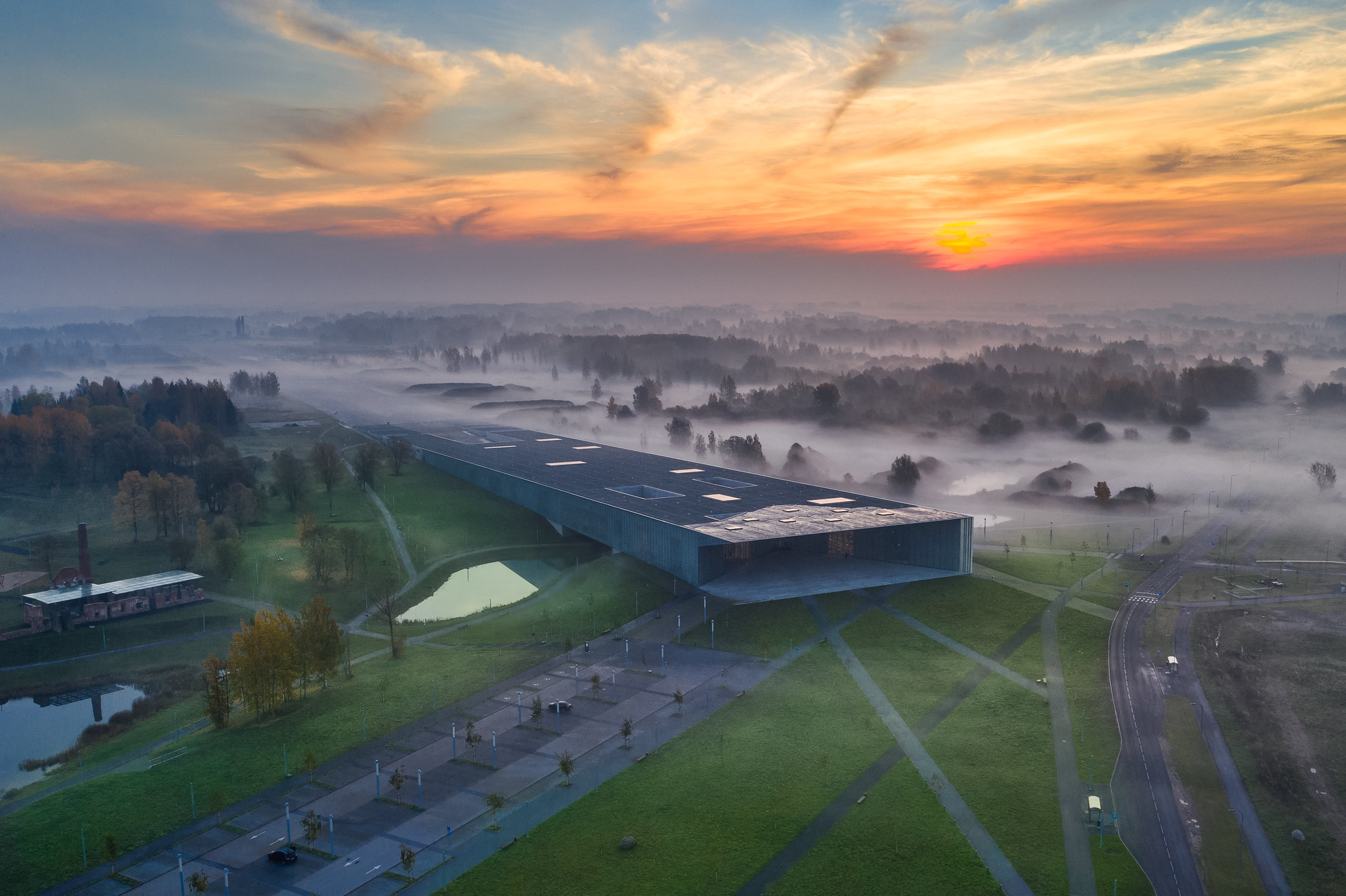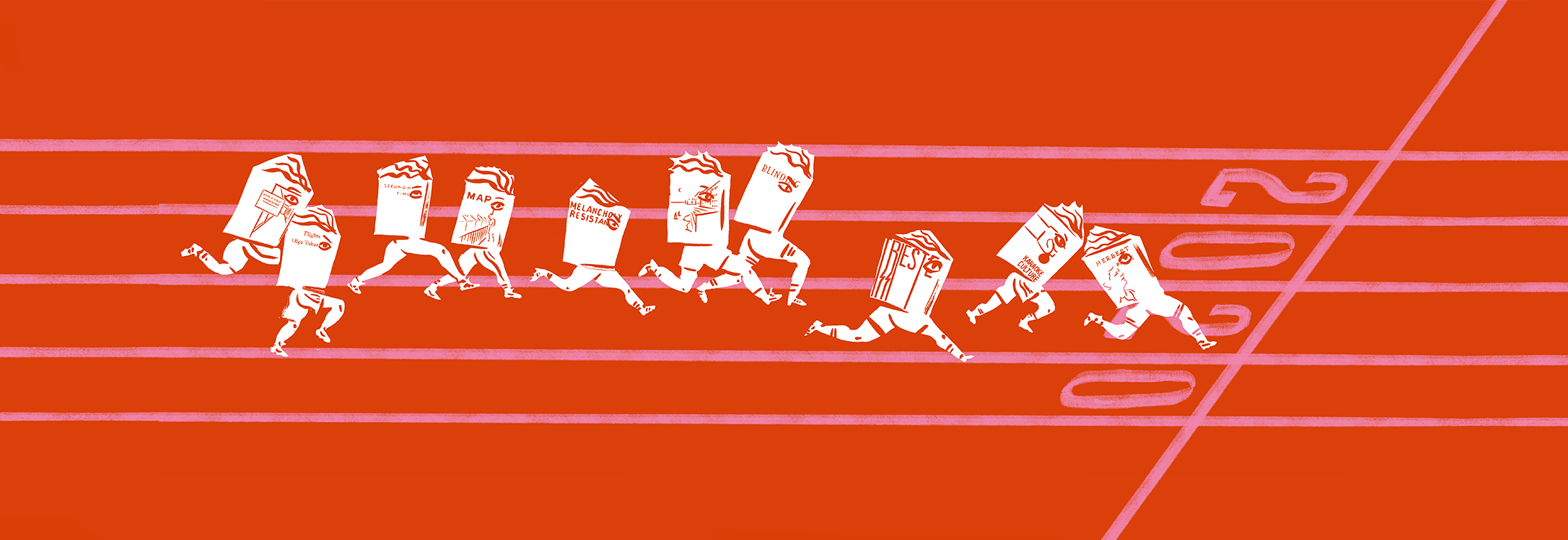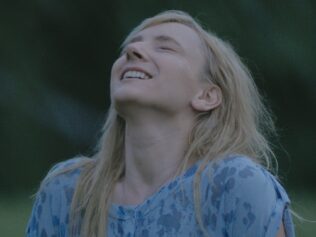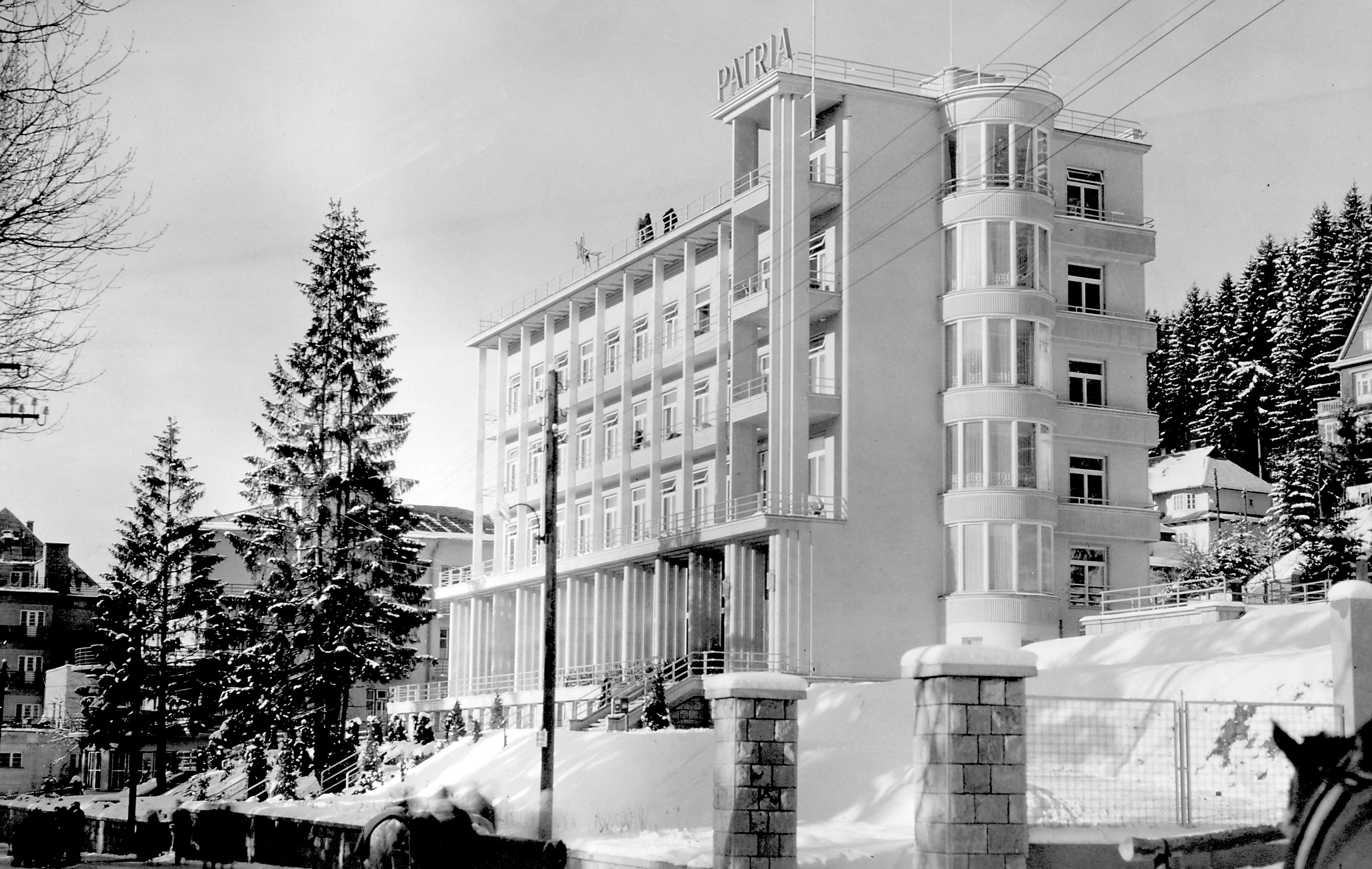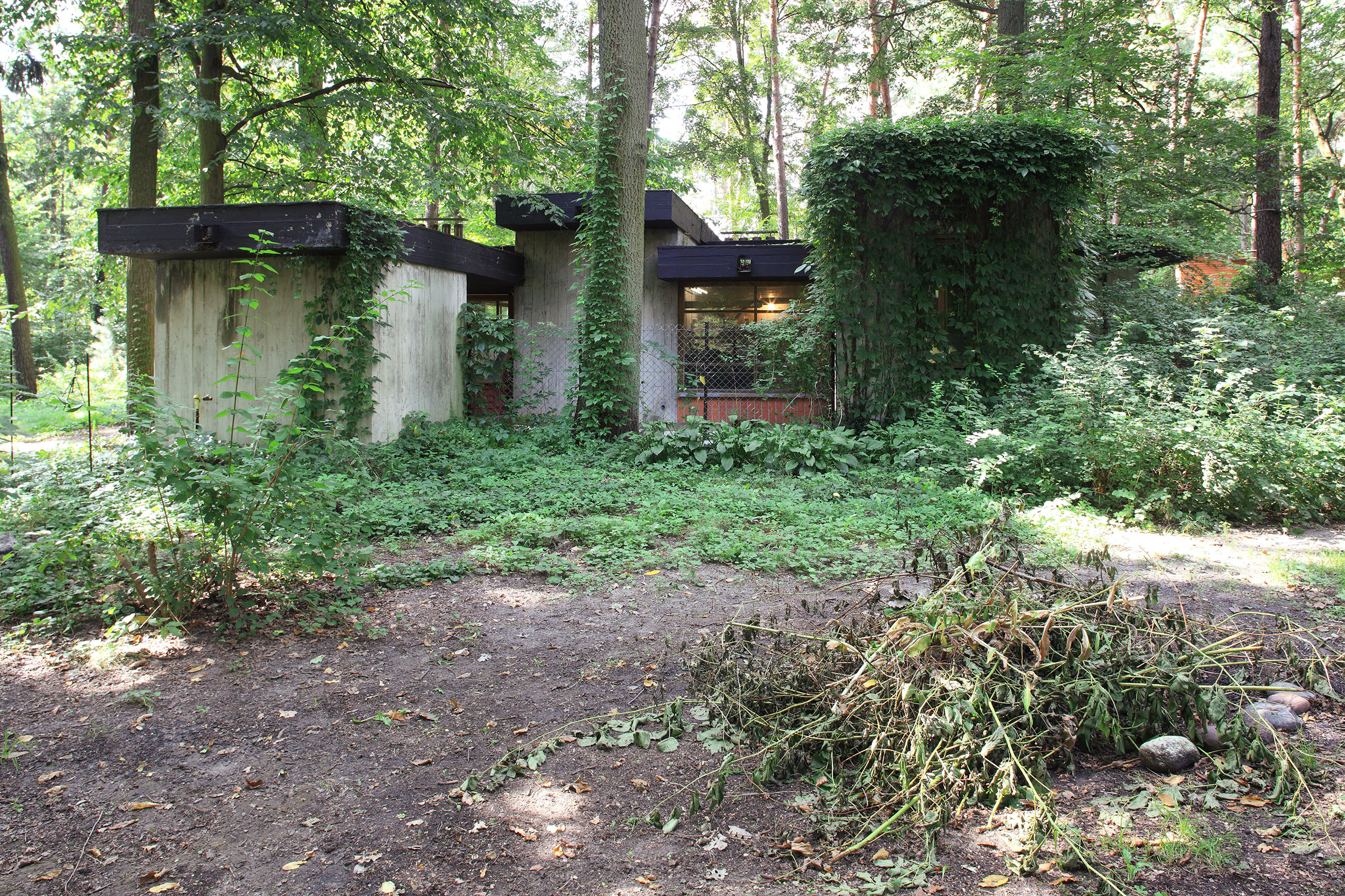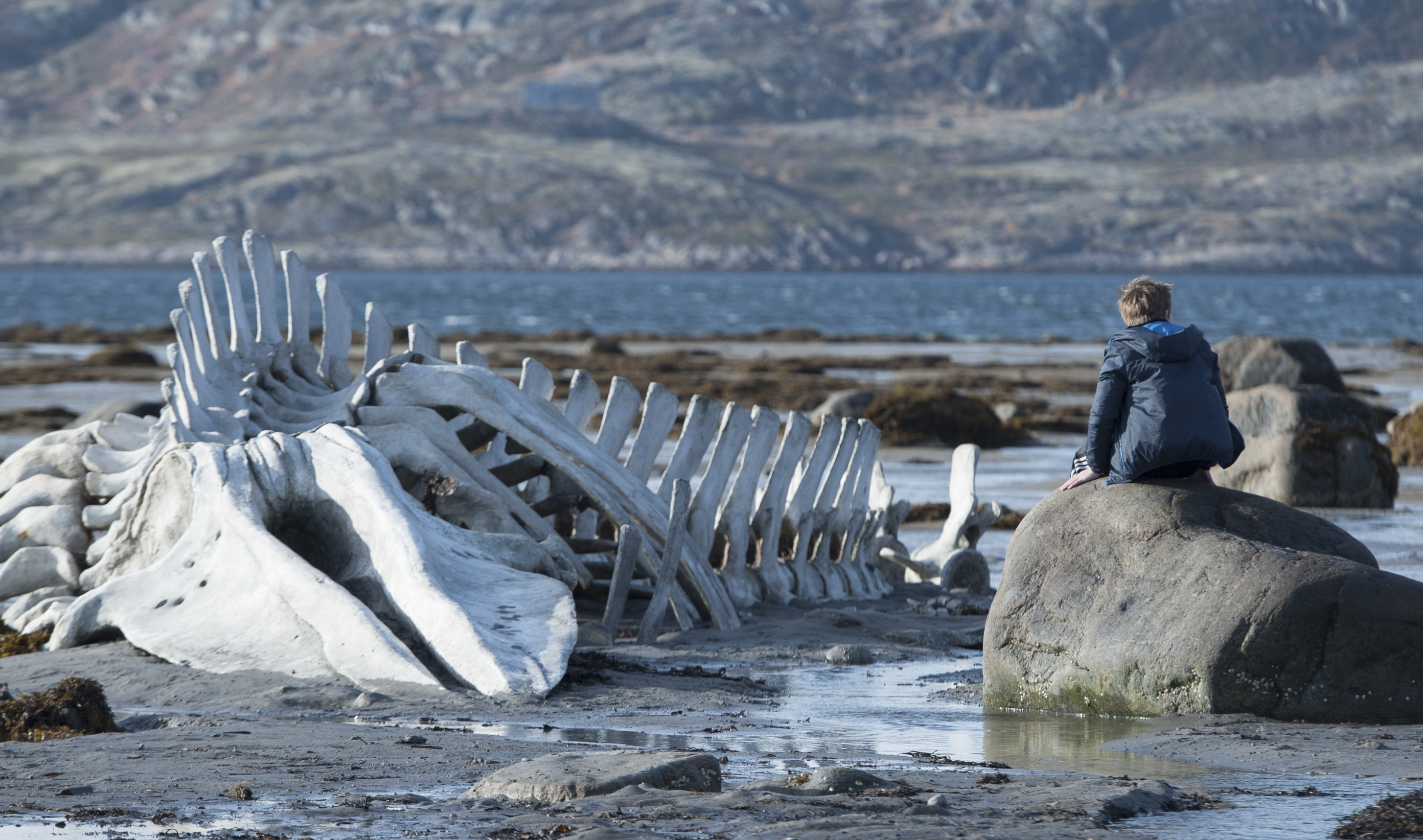
In his book L’architettura nel nuovo millennio [Architecture of the New Millennium], published in 2006, the renowned Italian historian of architecture Leonardo Benovolo wrote that since 1989, the art of building in Eastern Europe had been performed with low-tech methods and high-tech ambitions. But the last decade has showed that this is an increasingly rare phenomenon.
30 years have passed since the fall of the communist regimes, and our region, thanks to a supportive economy, EU subsidies and the free flow of information and materials, has become a land of attractive construction investments and bold architectural projects with ever-improving execution. The fall of the Iron Curtain opened a gigantic, trans-European motorway: architects from the post-communist countries practise and work in the most prestigious studios, and in turn, those from the so-called West participate eagerly in our competitions. Not to mention that international and intercultural collectives and teams are by now an everyday sight.
This list is a summary and a reflection of the changes made in the last decade. It includes a selection of the most intriguing buildings made by both local architects and those from other countries in Europe and around the world. The list includes buildings small and large, built from scratch and brought back to life after being forgotten for years. As architecture isn’t limited to putting up walls, I’ve included parks and squares on this list. These are our favourites – thus the list is very subjective. There are few self-aggrandizing, imposing structures here. I concentrated primarily on projects that intelligently open up dialogue with their space, landscape and history, responding to the needs of today’s users, questioning the very process of producing architecture and in a perverse, refined way questioning the generally accepted way of thinking about it and its role in today’s world. So let’s get started!
POLAND
Votum Aleksa chapel
Location: Tarnów nad Wisłą, Poland
Design: Pracownia Beton
Year: 2010
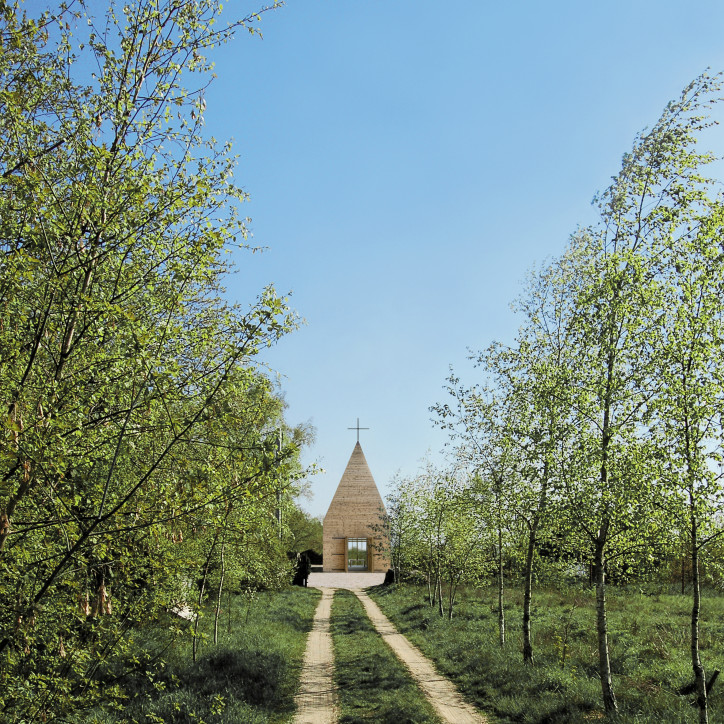
This is a small building of 82 square metres, and a modest one. Exceptional, because every inch stands in opposition to the de rigueur tastes and practices of church construction in Poland, where there’s a preference for ‘golden but modest’.
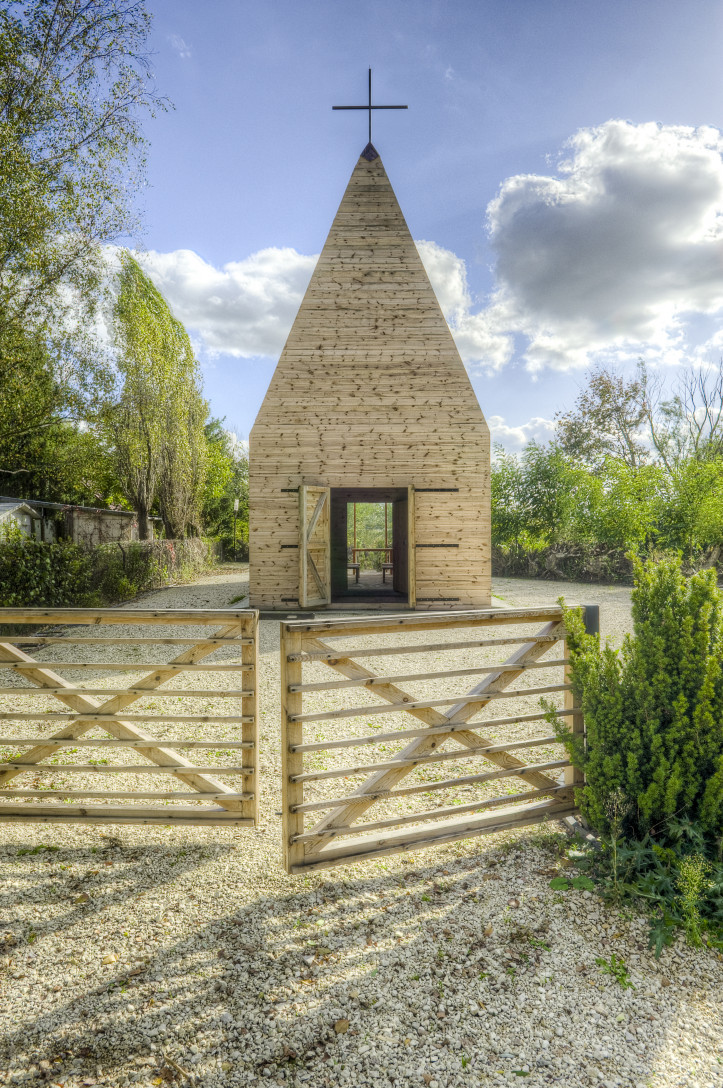
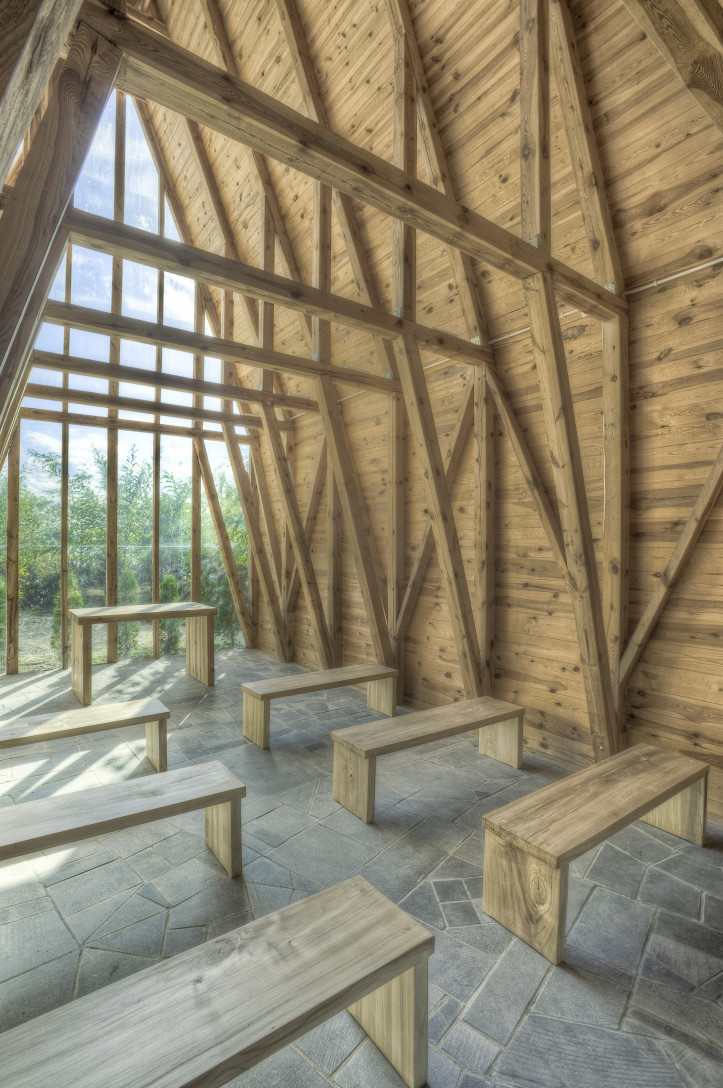
Here, a private donor asked young architects from the Beton studio to design a small wooden church in Tarnów nad Wisłą, to create a meeting place for the villagers; a place of contemplation. The structure of the chapel was made from pine wood, and entirely covered with aspen shingles. Its main characteristics are its rudimentary form, with surprisingly perfect proportions; its unsophisticated details, the simplicity of its structure. The most important point of the chapel is the gable wall above the altar. Made entirely of glass, it opens up to the local landscape – the Vistula river and a beautiful green escarpment. The church was built entirely by local contractors. It made the shortlist for the biennial European Mies van der Rohe Award in 2011.
Katyń Museum
Location: Warsaw, Poland
Design: BBGK Architekci with Maks and Jerzy Kalina
Year: 2016
The museum, built on the grounds of the Warsaw Citadel, a 19th-century Russian fortress, is a formally coherent and captivating spatial evocation of a tragedy: the murder of 22,000 Polish officers held in 1939–1940 in Soviet camps and prisons. The complex is made up of three buildings and a park with a symbolic Katyń Forest.
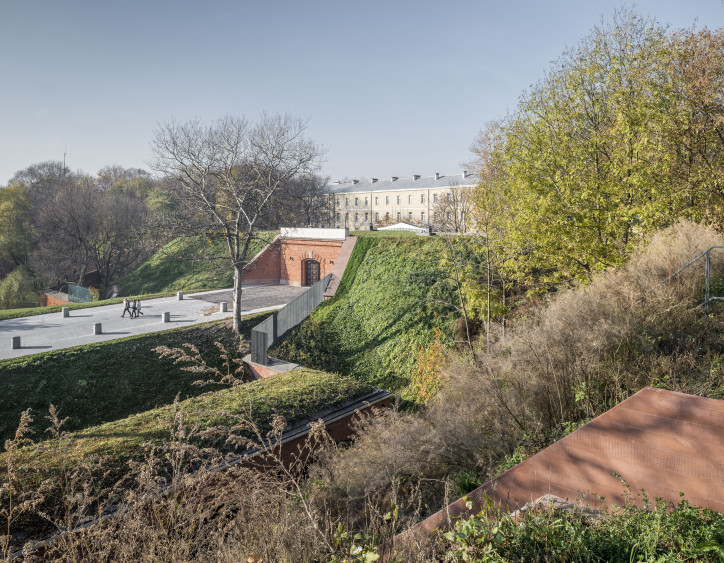
We enter the museum through the New Town Gate. An exhibition including keepsakes from the murdered officers discovered during the exhumation – everyday objects: combs, pipes, razors, cups, buttons, glasses – is spread out over two levels of the caponier. Plaques with the names of the victims were placed in the building of the former shooting range, behind glassed-in arcades. The entire complex is crowned by a dramatic breach in the landscape, made from red-pigmented concrete in the escarpment of the Citadel. That’s where steps were located leading to the exit, where in front of that symbolic birch forest an oak cross was placed.
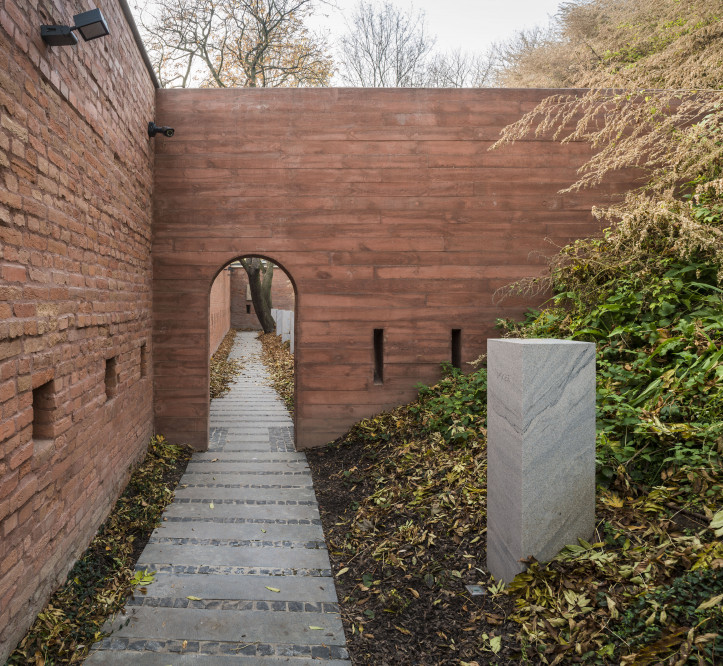
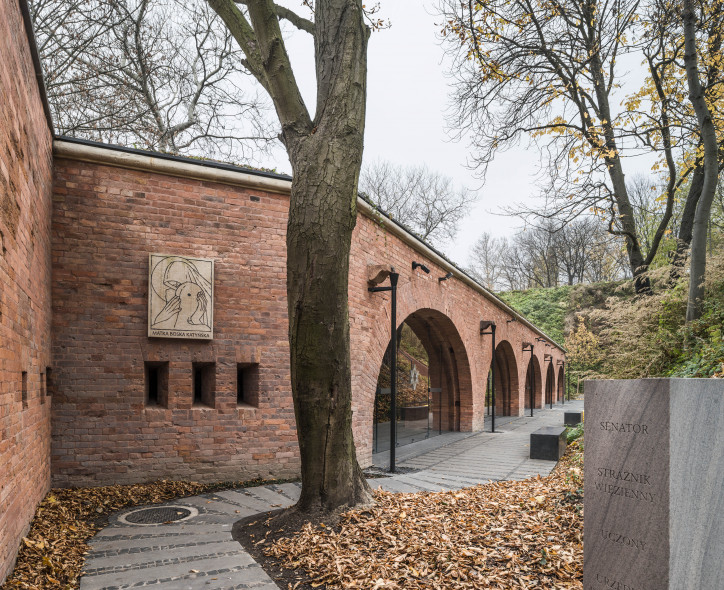
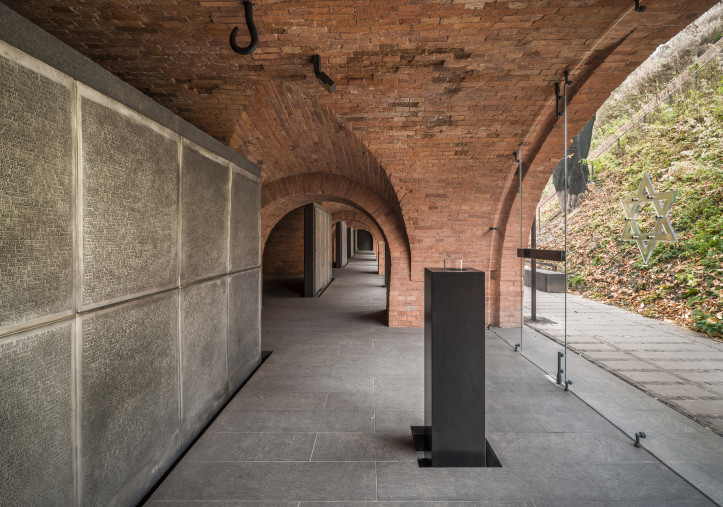
The building made it to the finals of the 2017 Mies van der Rohe Price and won the East Centric Architecture Triennale Award in 2019.
Mieczysław Karłowicz Philharmonic Hall
Location: Szczecin, Poland
Design: Estudio Barozzi Veiga
Year: 2014
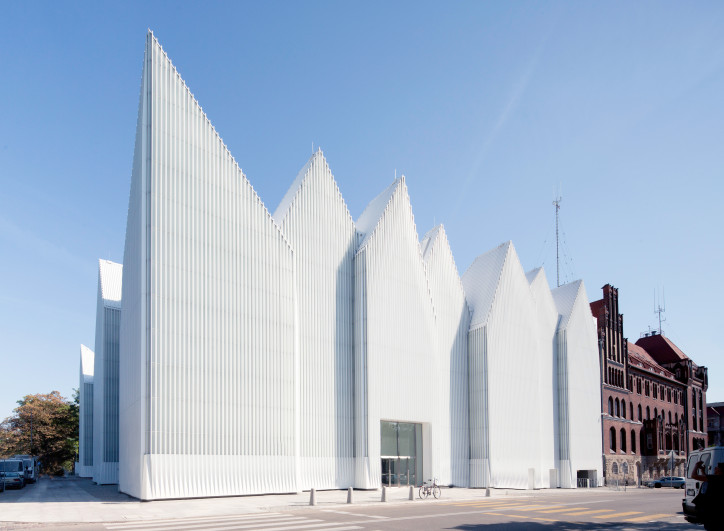
This is an exceptional building, wildly consistent and full of tensions. In its expressionistic form, the gleaming white structure in the very centre of Szczecin refers to the local and historical context of this former German city. Simultaneously, the glass and aluminium facade and its LED lighting are a breath of modernity, lending a lightness to the Philharmonic. Through a small glass gate we enter the monumental, more than 10-metre hall, dominated by the heavy geometrical form of a spiral staircase and the chamber hall (which ‘levitates’ over the bar). On the first floor is found the main symphony hall, which can hold an audience of 953. The curvatures on its walls and ceiling guarantee perfect acoustics. These surfaces were covered with gold leaf, making the space contrast with the sterile white that dominates the outside and the main hall.
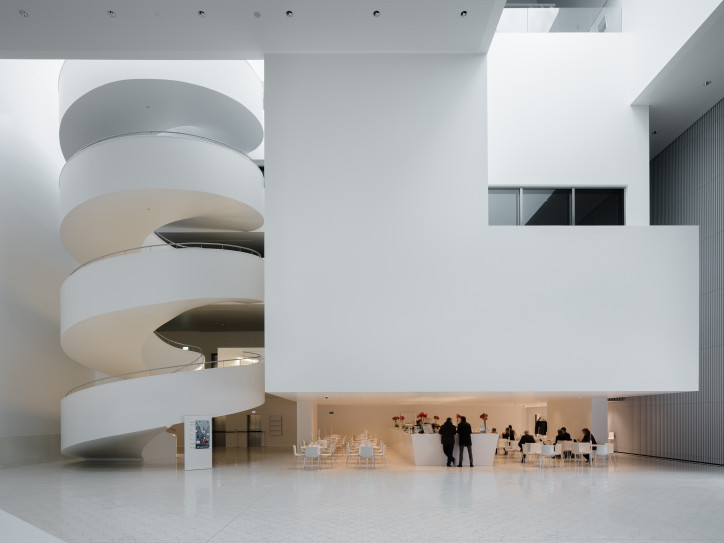
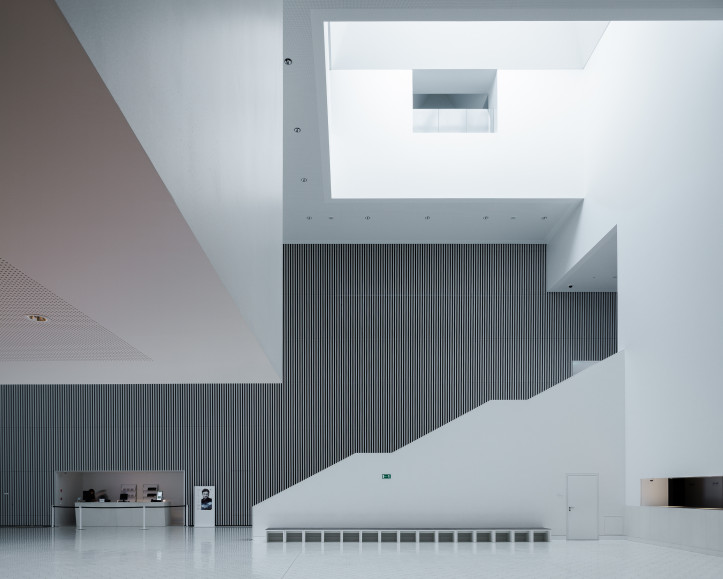
The Philharmonic, designed by the renowned Spanish studio Barozzi Veiga from Barcelona, in 2015 became the first and so far only building from Central and Eastern Europe to receive the main Mies van der Rohe Award.
Shakespeare Theatre
Location: Gdańsk, Polska
Design: Renato Rizzi
Year: 2015
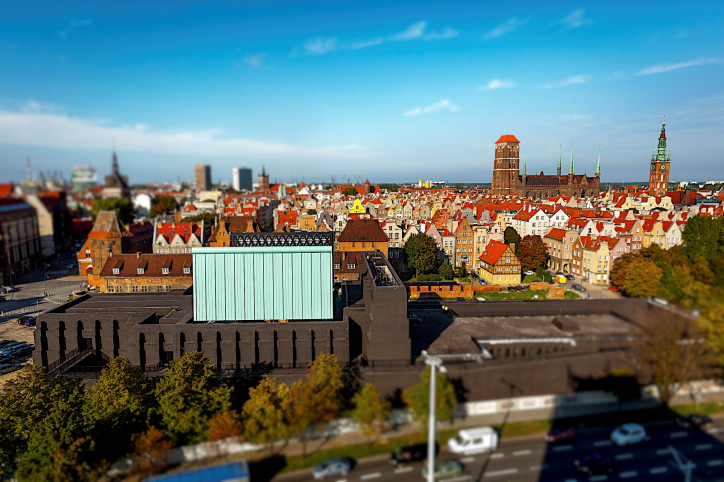
Like the Szczecin Philharmonic building, the Gdańsk theatre is a paean to the expression of form, uncompromising design and monochrome elevations.
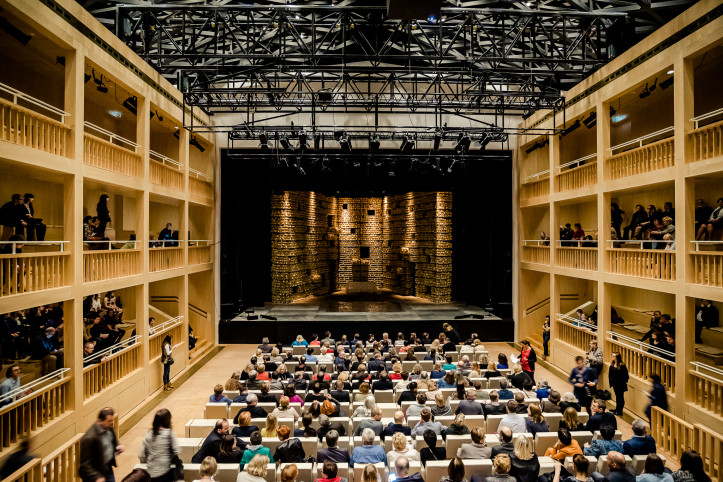
The building is the work of the Italian architect Renato Rizzi. It was erected in a location where almost four centuries earlier, the first public theatre on the territory of the Polish Republic was built. The heavy, massive structure, completely clad in anthracite brick, is supported by buttresses that rise toward each other. The form refers directly to the city’s Gothic churches. What’s more, the entire structure is surrounded by a wall several metres high, behind which we get lost in a magical labyrinth of courtyards and external staircases. The interior of the theatre contrasts with the colour of the facades. There, white and the natural tone of light stone and wooden facing are dominant. The architectural apogee of the building is its retractable roof, allowing events to be organized under the skies, just like in Elizabethan London.
New building of the Radio and Television Department at the University of Silesia
Location: Katowice, Poland
Design: BAAS, Grupa 5 and Małeccy Studio
Year: 2018

In the last decade, several high-quality public buildings have gone up in Katowice, which is a kind of phenomenon on the map of Poland. The Scientific Information Centre and Academic Library, the National Radio Symphony Orchestra, International Conference Centre and Silesian Museum are significant, interesting and exceptionally well executed. But from this entire constellation, the most distinctive is the smallest and the most hidden: the Radio and Television Department at the University of Silesia.
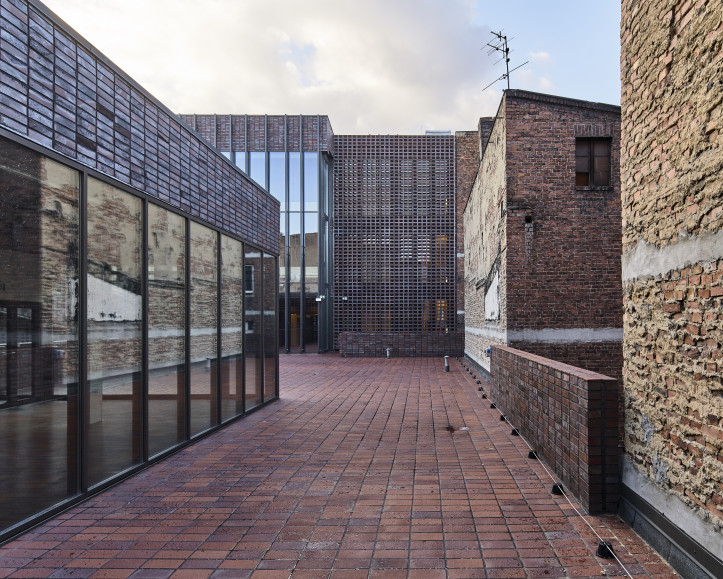
The design was born out of a collaboration between Catalonian and Polish architects. It’s a multi-dimensional intervention, which doesn’t restrict itself to filling in the urban tissue by building a new structure into it. It was decided to incorporate the structure of a pre-war light bulb factory found on the street frontage. The brick facade inspired the designers to create the elevation of the new building – covered with translucent ceramic mouldings in the same colour. Despite these similarities, the architects managed to sketch out a visible though not excessively contrasting difference between the old and the new. That makes the Radio and Television Department at the University of Silesia an outstanding example of combining history with the contemporary and fitting a new structure into existing construction.
CENTRAL & EASTERN EUROPE
Arvo Pärt Centre
Location: Laulasmaa, Estonia
Design: Nieto Sobejano Arquitectos
Year: 2018

Built in the middle of a pine forest, and just a few hundred metres from the Baltic Sea, the Arvo Pärt Centre is an absolutely magical place. The building was created thanks to a collaboration between the Estonian government and the family of the artist, which since 2004 has been regularly archiving and cataloguing the musical documents of this composer, one of the most performed around the world. When in 2014 it was realized that a larger archive would be needed for Pärt’s legacy, the authorities decided to hold an international architectural competition, which was won by Spain’s Nieto Sobejano.
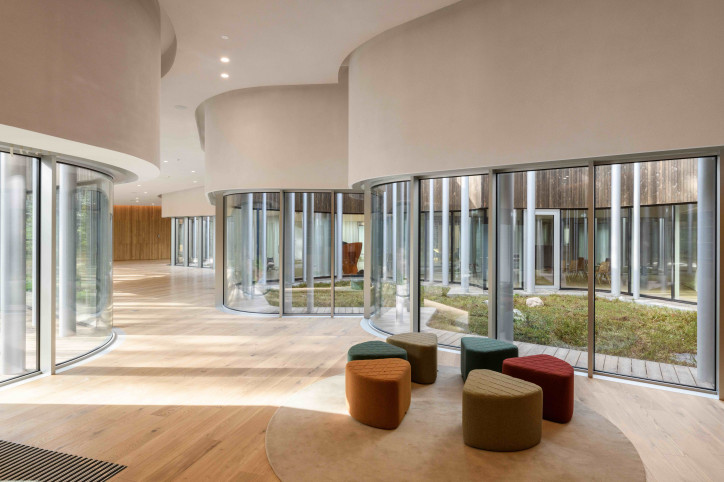
The architects designed a building that melds ideally into the seaside landscape of the gulf, half as high as the trees that surround it. The roof, spreading gently over the land, is supported by a range of round metal columns, distributed according to a rhythm that recalls certain Pärt compositions. Thanks to the extensive glazing, green courtyards and oak interiors, nature harmoniously penetrates into the interior, creating an atmosphere that supports thought and deep reflection.
Estonian National Museum
Location: Tartu, Estonia
Design: DGT Architects
Year: 2016
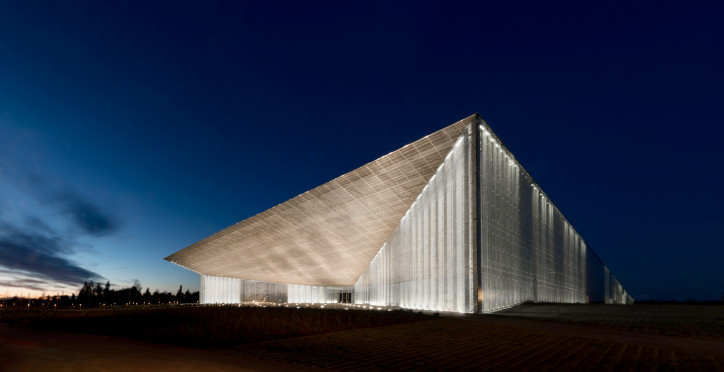
The competition for the Museum building was organized in 2005, and won by a young team from the Paris studio DGT Architects. In their concept, they questioned the competition guidelines, shifting the proposed location for the building to the nearby site of a former Soviet military airfield.
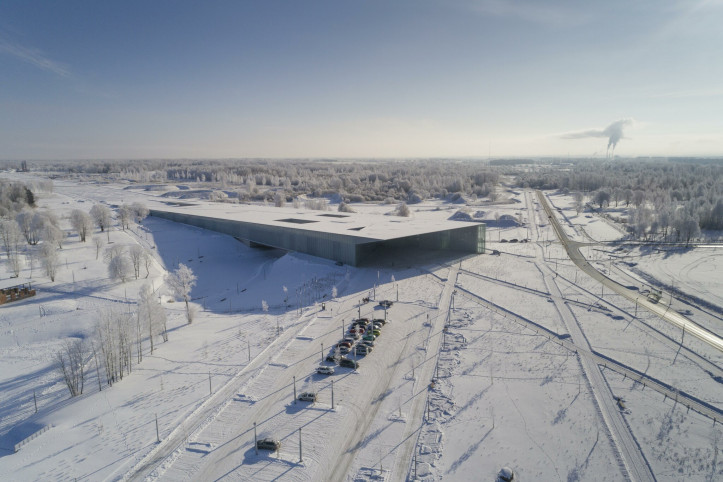
Aside from the obvious possibility of revitalization of at least a part of the base, the architects wanted first of all to highlight in their design the complicated and dramatic history of the country, which for 46 years found itself under Soviet rule. It was not uncontroversial. For some critics the location and historical connotations of the design were unacceptable; others questioned the idea of assigning such an important project to foreign architects. Along the way the financial crisis struck, not sparing Estonia. As a result, the building was constructed only 11 years later. But it was worth waiting for, because an absolutely out-of-the-ordinary building was created. The 350-metre structure, which emerges from the former runway, climbs upward, finishing in a dramatically expressive cantilever roof, stretching out for dozens of metres and inviting visitors inside. The building is entirely made of glass and concrete. The fields and forests that spread out around it lend the building drama. The 35,000-square-metre museum space can hold more than 140,000 exhibits. It’s the largest institution of its type in the Baltic countries.
Temporary pavilion and stage
Location: Dnipro, Ukraine
Design: Kateryna Rusetska, Andrii Palash, Kuba Snopek, Tomasz Świetlik and their team
Year: 2017; dismantled in 2018; work on a permanent pavilion is under way
The Stage is an experimental public space, set up in 2017 on the site of a former amphitheatre in Shevchenko Park in Dnipro.
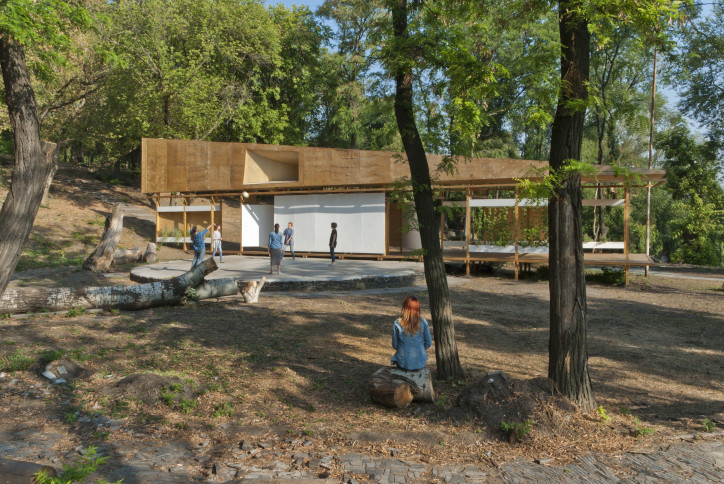
An international group of architects, under the direction of Polish urban planner and researcher Kuba Snopek, used crowdsourcing and crowdfunding for the grassroots execution and financing of a small cultural building for the local community. In total, for all stages of the project – from the financial contributions through writing the guidelines, consulting with industry and typical construction work – more than 200 people were engaged.
The entire project comprised a wooden pavilion, a stage and a recreation space. Simple materials were used, such as wood and plywood. In the summer of 2017, local artists organized more than 60 cultural events here. Though the scale and size of the Stage obviously stand out from other projects mentioned on this list, the creators’ innovative and radically democratic approach to the design and production process of the entire project is worthy of the highest respect. In 2018, the Dnipro Stage won a distinction in a competition for Europe’s best public space.
Skanderbeg Square in Tirana
Location: Tirana, Albania
Design: 51N4E
Year: 2017
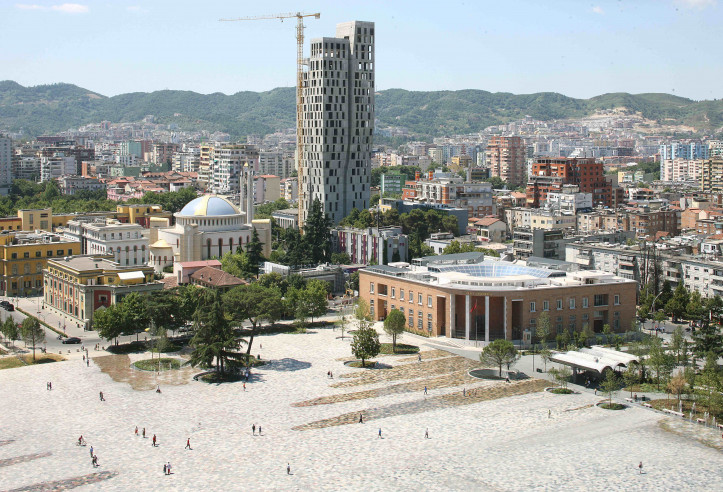
The design for the reconstruction of Skanderbeg Square in Tirana is an example of successfully handling a difficult historical legacy and urban spatial chaos in a creative, innovative way. Architects from the Belgian studio 51N4E, together with the renowned Albanian artist Anri Sala, won a 2008 international competition with their plan for creating a huge pedestrian-only space in the centre of the city, surrounded by a lush strip of vegetation comprising 12 different gardens. The main square, covering more than three hectares, is a flattened pyramid. Because we’re in its central part, the communist-era buildings surrounding us lose their authoritarian tone. Under the paving, made of various shades of local stone (129,600 square panels!), a system of fountains was installed, which on warm days gently flood the square, creating a huge flat sheet of water. That means the surface of the square shimmers with a show of colours like a giant Persian carpet, additionally creating a microclimate that cools down the hot Albanian summer for users of the square.
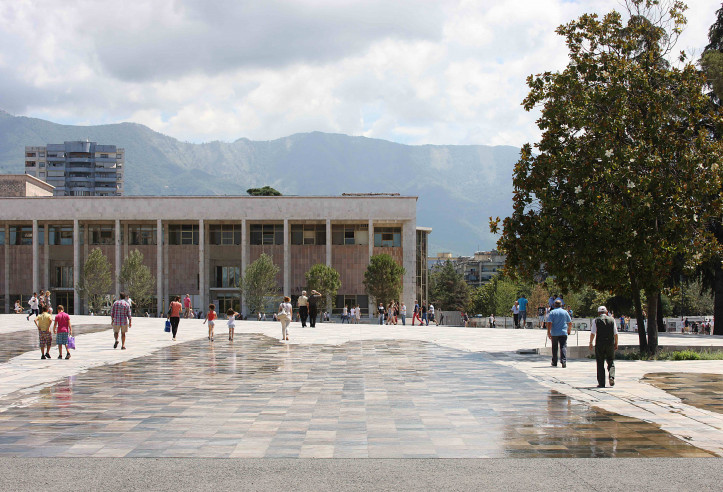
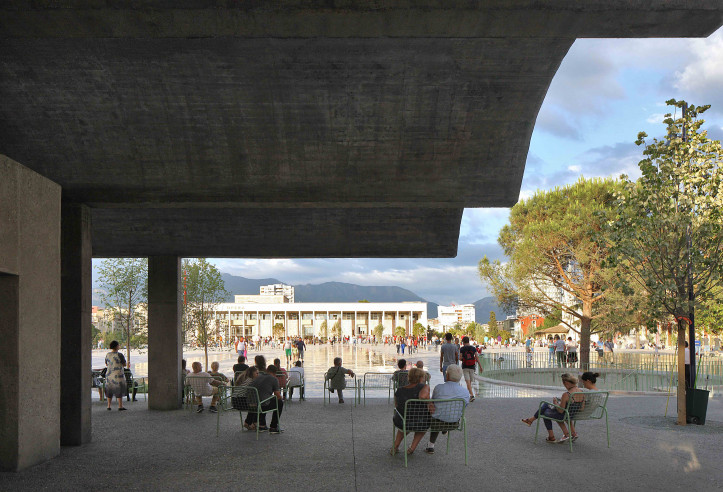
The design for the square won the competition for Europe’s best public space in 2018 and was a finalist for the 2019 Mies van der Rohe Award.
Revitalization of the Vyborg Library
Location: Vyborg (Viipuri), Russia
Design: Alvar and Aino Aalto
Revitalization: Tapani Mustonen, Maija Kairamo and the Finnish Committee for the Restoration of the Alvar Aalto Library in Vyborg
Year of completion: 2013
The library in Vyborg is one of the most important buildings in Alvar and Aino Aalto’s portfolio. The famous Finnish architects built it in 1927–1935 in a modernist style, with regional elements typical for Aalto. In their day, photos of the main reading room, with its round skylights, and an auditorium with a wavy, suspended wooden ceiling, made their way into every architectural magazine in the world. The building was also innovative in functional terms: it was the first library in Finland with free access to books and a separate section for children’s works. During World War II, Viipuri (the city’s Finnish name) was severely damaged by Red Army shelling and came under Soviet control, changing its name to Vyborg. The library building itself also suffered and for many years stood unused, which accelerated the destruction. After the collapse of the Soviet Union, the Alvar Aalto Academy, in cooperation with the Finnish and Russian governments, decided to start renovating the building. Unfortunately, because of difficulties with financing, the work stretched out for many years. But in 2010, after a visit by Finnish President Tarja Halonen to then-Prime Minister of Russia Vladimir Putin, more than €6 million (from a total cost of €9 million) was earmarked for renovation.
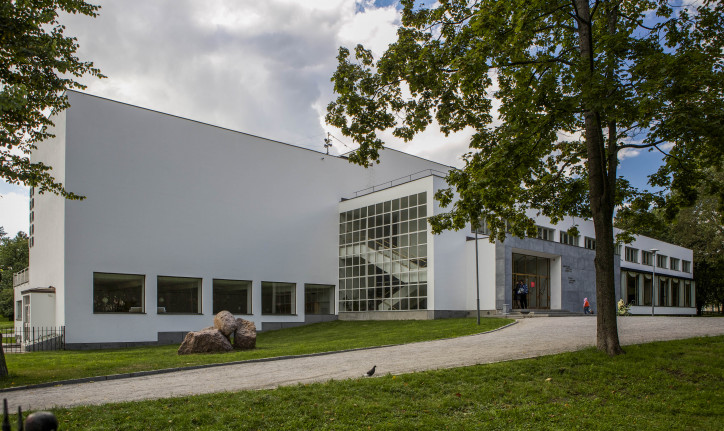
Using the building’s original design, many spaces could be restored in the smallest details. All technical improvements were carried out in a way that didn’t change the building’s original expression. As a result, the Finnish Committee for the Restoration of the Library won two prestigious awards: the World Monuments Fund/Knoll Modernism Prize and the Europa Nostra Award for a model conservation project. But I believe the most important thing is that one of the most beautiful examples of modernist architecture was brought back to life.
Translated from the Polish by Nathaniel Espino


